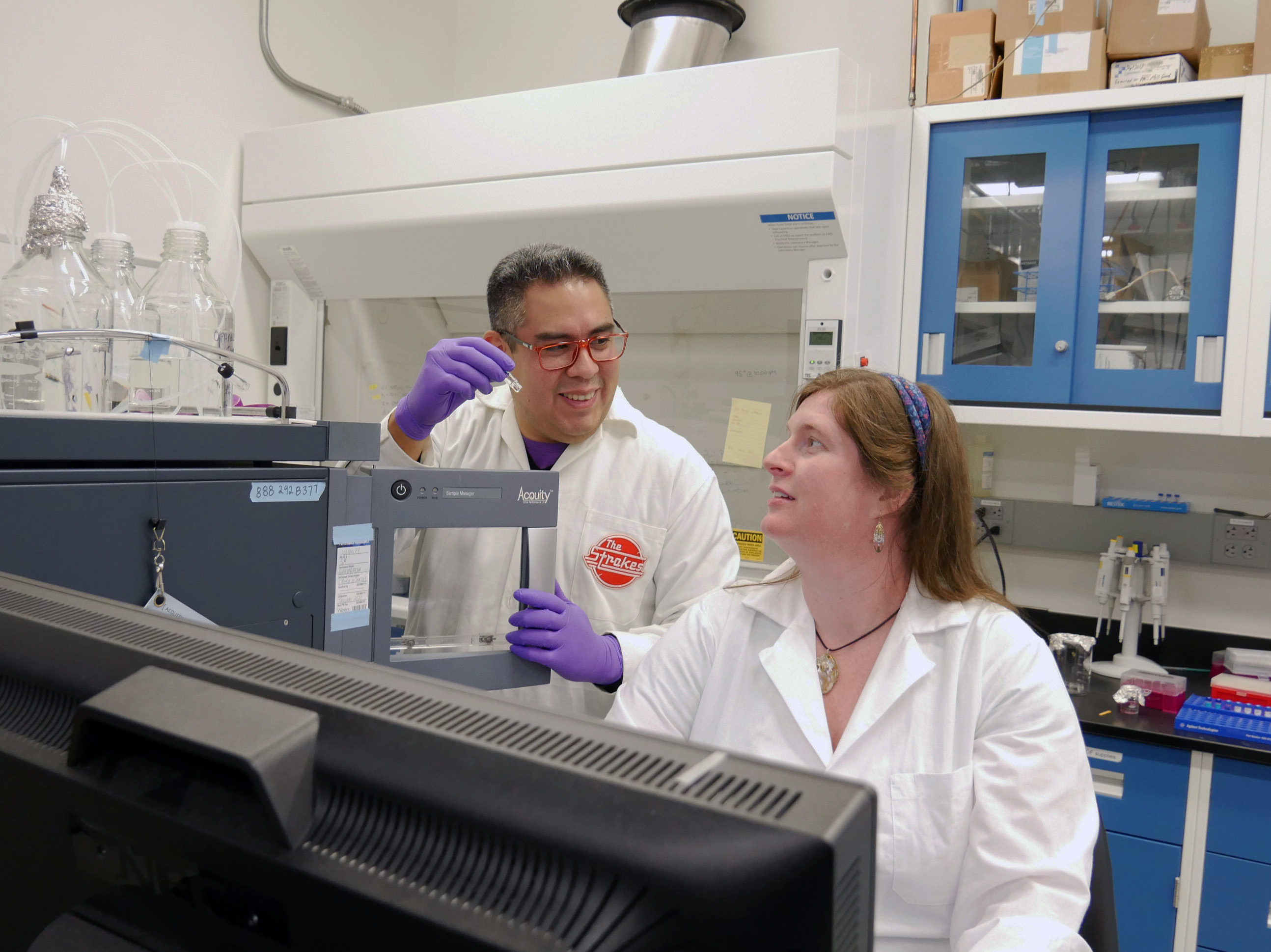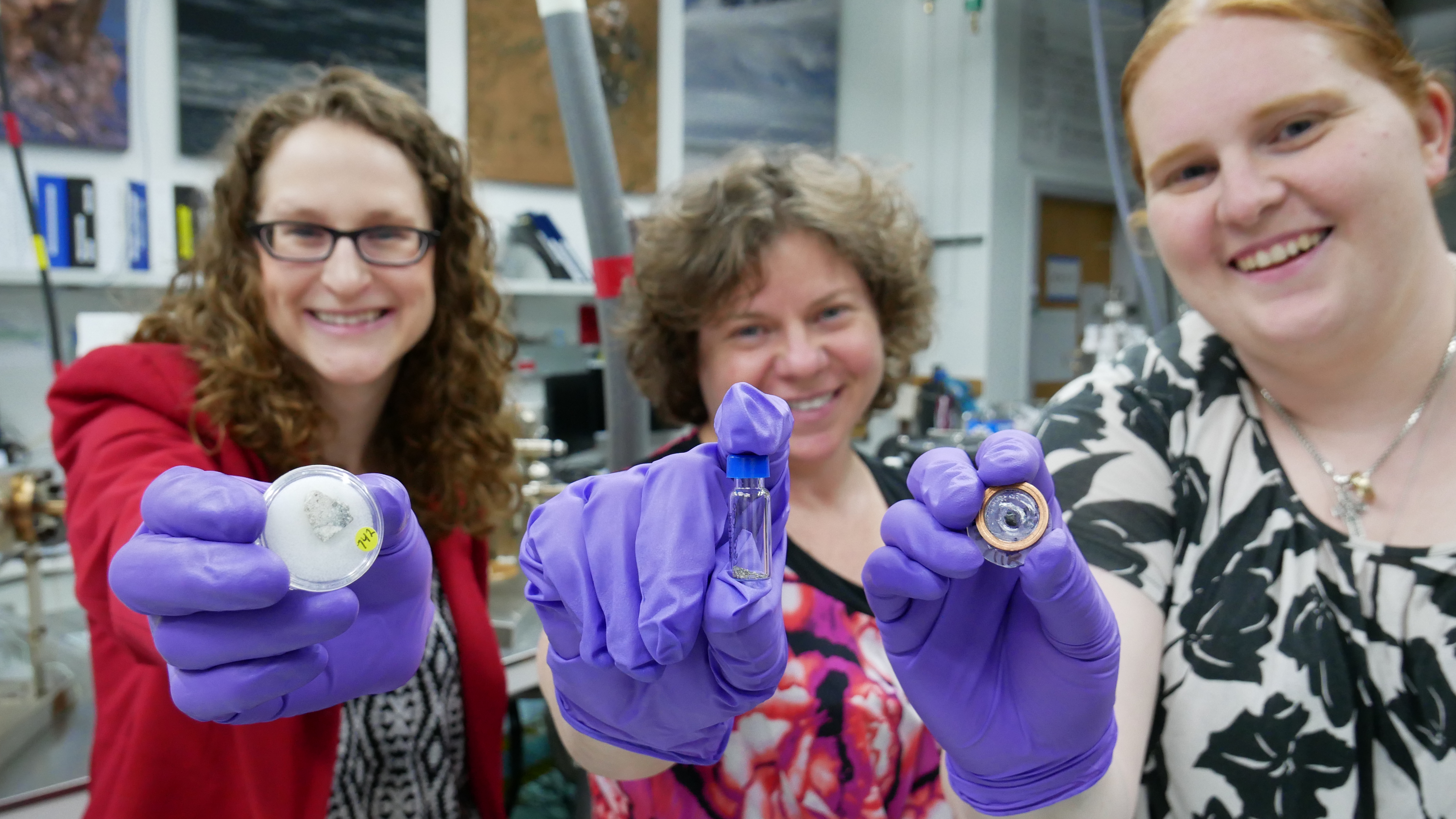NASA Will Give Scientists a Lump of Moon Dirt to Unwrap Soon. They're Thrilled.
These samples will help paint a picture of the evolution of our solar system.
NASA researchers received an extra special gift this holiday season: a box of Apollo moon soil to study in the new year.
This summer, NASA celebrated the 50th anniversary of the historic Apollo 11 mission, which landed humans on the moon in 1969. NASA's Apollo program included six crewed landings between 1969 and 1972, during which astronauts collected 842 lbs. (382 kilograms) of moon soil and rocks. Now, scientists have the opportunity to study those samples in greater detail, using advanced instruments.
"We are using instruments that did not exist during early analyses of moon samples," Jamie Elsila, an astrochemist in the Astrobiology Analytical Laboratory at NASA's Goddard Space Flight Center in Maryland, said in a statement. "Because our tools today are more sensitive, we can analyze things that are present in tiny amounts. We also now can separate chemical compounds from a mixture, making it easier to identify them."
Related: Apollo 11: First Men on the Moon

These newly delivered Apollo samples were frozen and have remained sealed for half a century, according to NASA. Elsila leads one of the teams that will study the samples of moon rock, also known as regolith, to identify the chemical composition in grains as small as a speck of dust. Scientists will use this information to better understand the chemistry of the lunar surface and the evolution of our solar system, according to the statement.
Elsila and her team will be working specifically with samples collected during the Apollo 17 mission of 1972. The lunar soil collected during that mission was from the area near the landing site, at Taurus-Littrow valley on the eastern rim of Mare Serenitatis.
Using the Apollo samples, the team will look for amino acids, which are simple organic compounds that are the building blocks of proteins. Unlike Earth, the lunar surface has no wind, storms or other geologic processes to cause erosion. Therefore, the samples collected from the moon will help shed light on the primordial chemistry of the solar system, according to the statement.
Get the Space.com Newsletter
Breaking space news, the latest updates on rocket launches, skywatching events and more!
"We don't have any rocks on Earth that are older than about 4 billion years old, so we don't know exactly how much volcanic activity there was or how heavily Earth was bombarded by asteroids," Barbara Cohen, a planetary scientist at Goddard, said in the statement. "Since the Earth and the moon formed together, we can use our findings from the moon to infer what happened on the early Earth."

Cohen leads another group at Goddard that will be studying the lunar material, including a set of samples that were collected 10.6 inches (27 centimeters) below the lunar surface. Astronauts immediately vacuum-sealed those samples, preserving the delicate gas and rock, according to the statement.
The team will measure the amount and types of noble gases in the lunar samples. This information will shed light on how long the soil was exposed to various types of radiation, ranging from solar wind to cosmic rays or meteorites, according to the statement.
"We will use our findings to paint a picture of what kind of space environment affected Taurus-Littrow valley over hundreds of millions of years," Natalie Curran, a postdoctoral researcher in Cohen's lab, said in the statement. "This will provide important geologic context to scientists who analyze rocks from that site, especially our colleagues who are studying whether the buildings blocks of life formed on Earth or were delivered here from space."
- Apollo 11 at 50: A Complete Guide to the Historic Moon Landing
- The Apollo Moon Landings: How They Worked (Infographic)
- Destination Moon: The 350-Year History of Lunar Exploration (Infographic)
Follow Samantha Mathewson @Sam_Ashley13. Follow us on Twitter @Spacedotcom and on Facebook.

Join our Space Forums to keep talking space on the latest missions, night sky and more! And if you have a news tip, correction or comment, let us know at: community@space.com.

Samantha Mathewson joined Space.com as an intern in the summer of 2016. She received a B.A. in Journalism and Environmental Science at the University of New Haven, in Connecticut. Previously, her work has been published in Nature World News. When not writing or reading about science, Samantha enjoys traveling to new places and taking photos! You can follow her on Twitter @Sam_Ashley13.









